LEAD Marine’s Most In-Demand Jobs
The marine industry is a vital part of the global economy, driven by supply and demand. Although the industry has faced some challenges in recent years, it continues to evolve and grow. And demand for workers to fill skilled trades jobs in the U.S. marine industry is continuing to grow too. Strong growth projections for the next ten years make it an exciting and rewarding career opportunity.
LEAD Marine partners with many marine industry employers to match them with skilled trades workers that best fit the roles they are looking to fill. But as an active and approved vendor to three of our nation’s largest shipbuilders, there are some key jobs that LEAD Marine is almost always looking for strong candidates for. Learn more about LEAD Marine’s most in-demand jobs.

Journeyman Marine Electrician
A marine electrician is responsible for installing, maintaining, and repairing marine equipment. These skilled tradesmen are trusted to keep all electrical systems, components, and equipment working properly. A marine electrician must be able to work onshore in or around marine facilities and offshore, on ships or other marine vessels. The job often involves working long hours to complete time sensitive projects.
-
Electrician Helper
LEAD StaffingChula Vista, CA -
Marine Electrician
LEAD StaffingSan Diego, CA -
Electrician
LEAD StaffingNorfolk, VA -
Area Manager (MCT)
LEAD StaffingNorfolk, VA -
Marine Electrician
LEAD StaffingJacksonville, FL -
Electrician
LEAD StaffingAtlantic Beach, FL -
Marine Electrician
LEAD StaffingSan Diego, CA -
Marine Electrician
LEAD StaffingSan Diego, CA -
Electrician
LEAD StaffingHampton, VA -
Cable Pullers
LEAD StaffingSan Diego, CA
Outside Machinists/Mechanics
Outside Machinists and Mechanics specialize in working on machinery and equipment on ships, submarines, and other marine vessels. Must be an experienced 1st or 2nd Class Outside Mechanic.
Journeyman Pipefitters with Marine Work Experience
Journeyman pipefitters are responsible for removing, repairing, targeting, laying out, fabricating, and testing marine piping systems such as auxiliary salt water, fire main, potable water, hydraulic, compressed air, fuel, oil, and engine exhaust in accordance with NAVSEA/Military standards and drawings.
Journeyman Marine Pipefitters are also responsible for having comprehensive knowledge of:
- Ship repair terminology and ship compartments.
- Equipment and work processes used in marine pipe fabrication, repair, and targeting.
-
Pipefitter Journeymen
LEAD StaffingSan Diego, CA -
Pipefitter Helper
LEAD StaffingNorfolk, VA -
Journeyman Pipefitter
LEAD StaffingJacksonville, FL -
Pipefitters
LEAD StaffingSt Petersburg, FL -
Commercial – Mechanical Pipefitters
LEAD StaffingBrandon, FL -
Pipefitter
LEAD StaffingSarasota, FL -
Pipefitter Journeyman
LEAD StaffingSan Diego, CA -
Pipefitter Non-Local
LEAD StaffingSan Diego, CA -
Pipe Welder/Pipefitter
LEAD StaffingEl Cajon, CA -
Pipefitter
LEAD StaffingCharleston, SC
Shipfitter
A shipfitter is a skilled tradesperson responsible for building or repairing ships and other marine vessels. They typically work in shipyards as part of a team that assembles or ‘fits together’ structural portions of a ship.
-
Advanced Shipfitter
LEAD StaffingNewport News, VA -
Shipfitter
LEAD StaffingJacksonville, FL -
Shipfitter Non-Local
LEAD StaffingSan Diego, CA -
Shipfitter
LEAD StaffingSan Diego, CA -
Shipfitter
LEAD StaffingNorfolk, VA -
Shipfitter
LEAD StaffingJacksonville, FL -
Shipfitter
LEAD StaffingNorfolk, VA -
Advanced Shipfitter
LEAD StaffingNewport News, VA -
Ship Fitter Helper
LEAD StaffingJacksonville, FL -
Shipfitter Improver
LEAD StaffingJacksonville, FL
Journeyman Marine Structural Welder
A marine structural welder’s job is to construct and repair large marine structures and vessels that require welding. They are responsible for designing, positioning, assembling, and fabricating metal frameworks and components of large marine structures or vessels.
-
Specialty Welder Non-Local
LEAD StaffingSan Diego, CA -
Pipe Welder Journeymen
LEAD StaffingSan Diego, CA -
Structural Welder
LEAD StaffingSan Diego, CA -
Structural Welder
LEAD StaffingSan Diego, CA -
Pipe Welder Local
LEAD StaffingSan Diego, CA -
Structural Welder Non-Local
LEAD StaffingSan Diego, CA -
Pipe Welder Non-Local
LEAD StaffingSan Diego, CA -
Pipe Welder
LEAD StaffingSan Diego, CA -
Structural Welder
LEAD StaffingSan Diego, CA -
Lead Marine JAX Roles
LEAD StaffingJacksonville, FL


